How To Identify Japanese Knotweed In Seconds
Title: How to Identify Japanese Knotweed in Seconds
Introduction:
Japanese knotweed is an invasive plant that can be incredibly difficult to get rid of. It is important to be able to identify Japanese knotweed so that you can take steps to control it. In this blog post, I will share some of the key features of Japanese knotweed that you can look for.
Key Features of Japanese Knotweed:
- Red shoots in spring: Japanese knotweed shoots emerge in spring and are a bright red color. They look similar to asparagus spears.
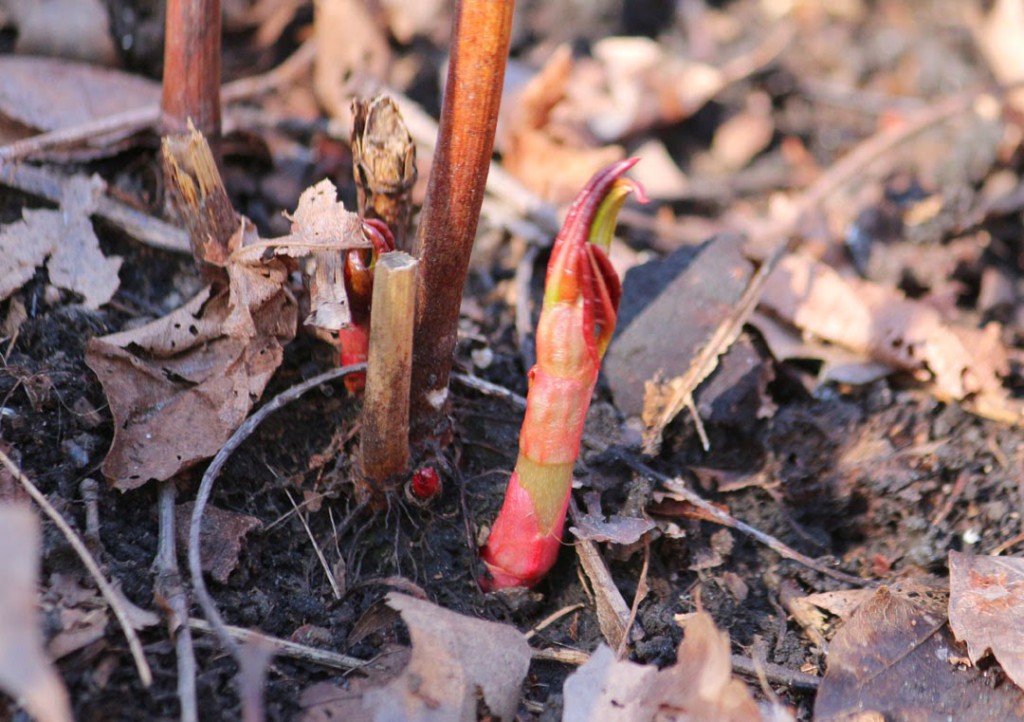
- Shovel-shaped leaves: Japanese knotweed leaves are large and shovel-shaped. They are green on top and paler on the bottom. The leaves are arranged alternately on the stem.
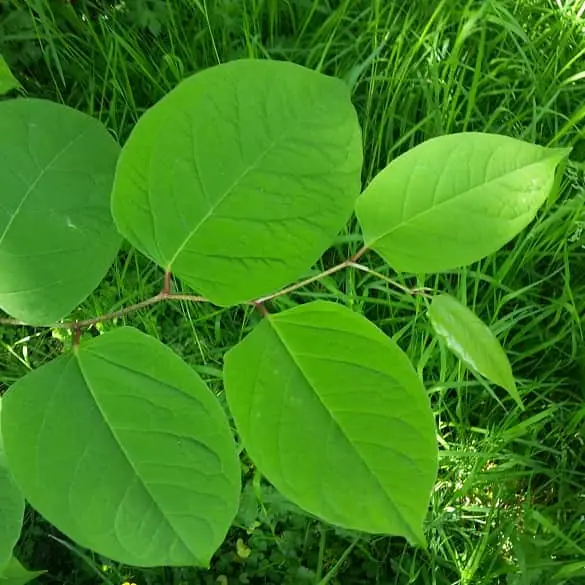
- Hollow stems: Japanese knotweed stems are hollow. They are dark brown in color and can grow up to 10 feet tall.

- Creamy white flowers: Japanese knotweed flowers are creamy white and appear in late summer or early fall. They are arranged in panicles, which are loose clusters of flowers.
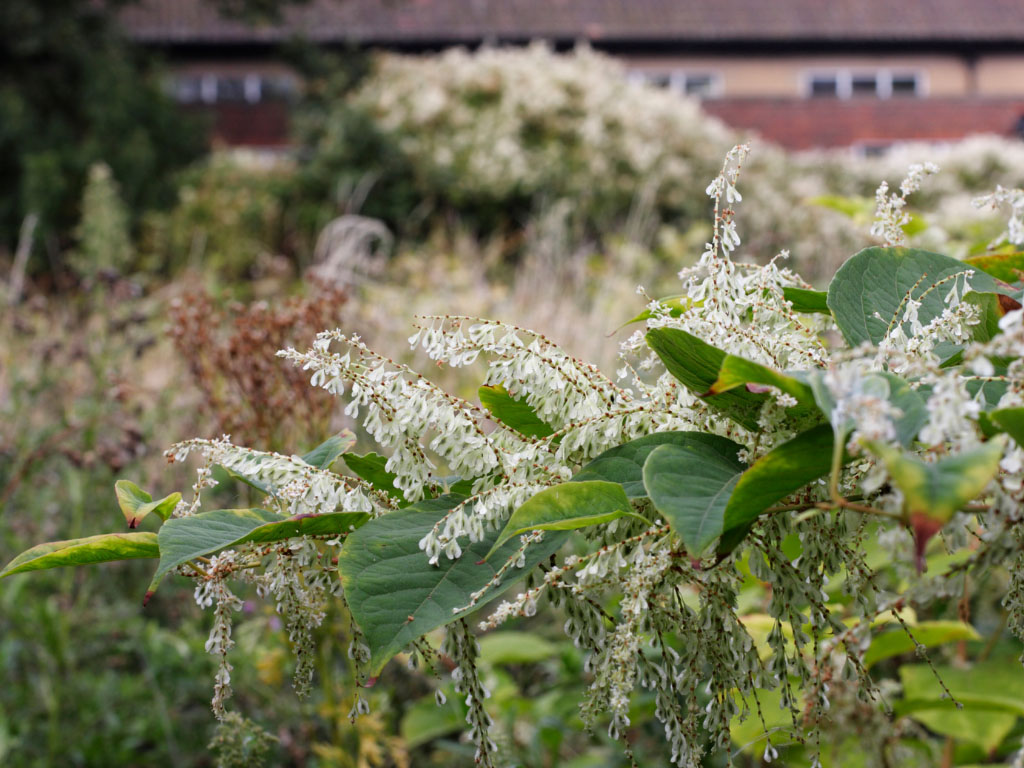
- Rhizomes: Japanese knotweed spreads by rhizomes, which are underground stems. Rhizomes can grow up to 30 feet long and can survive for many years.
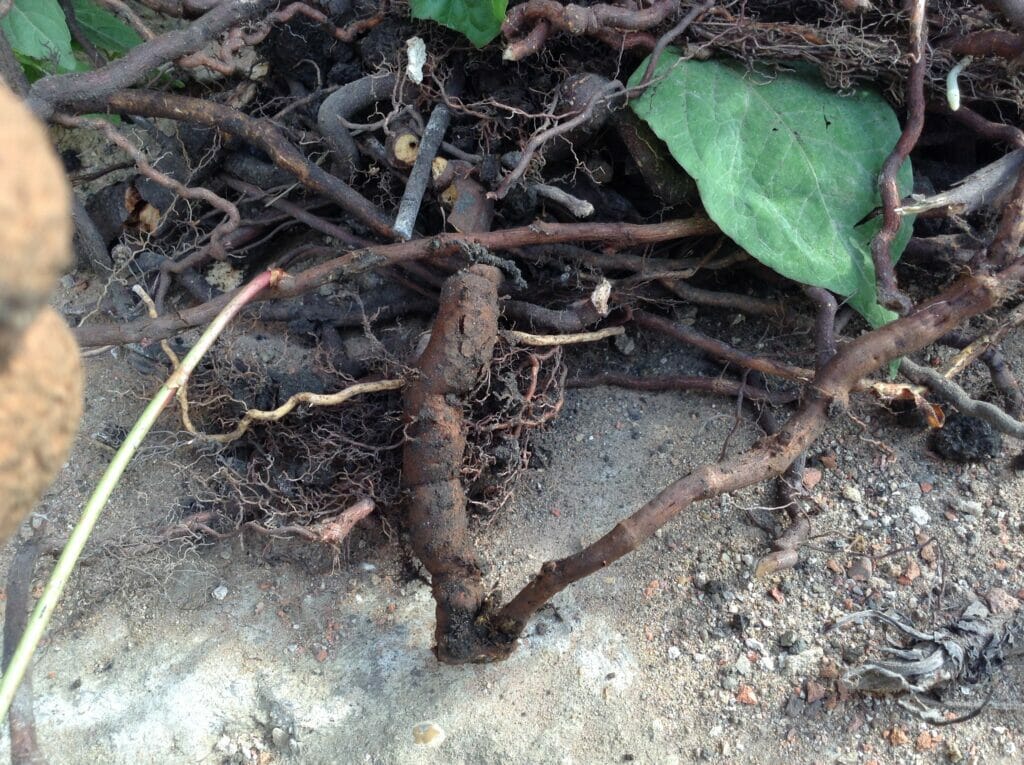
How to Identify Japanese Knotweed:
If you see a plant with any of the features listed above, it is likely Japanese knotweed. However, it is always a good idea to get a professional identification if you are not sure.
Conclusion:
Japanese knotweed is a serious invasive plant that can cause significant damage to property and the environment. It is important to be able to identify Japanese knotweed so that you can take steps to control it. If you think you have Japanese knotweed on your property, contact a professional for removal.
Japanese knotweed is a highly invasive and resilient weed that can cause significant damage to property and infrastructure. It is important to be able to identify Japanese knotweed early so that it can be dealt with promptly.
Here are some of the key features of Japanese knotweed:
- Shovel-shaped leaves that are staggered on the stem (one leaf per node), creating a zig-zag stem growth pattern.
- Green stems that can grow up to 3 meters tall.
- Creamy white flowers that bloom in late summer.
- Rhizomes that can grow up to 7 meters long and 3 meters deep.
If you think you may have Japanese knotweed on your property, it is important to have it identified by a qualified professional. You can visit Home Gardening for more information about Japanese knotweed identification and control.
FAQ of japanese knotweed identification
- What are the identifying characteristics of Japanese knotweed?
Japanese knotweed is a tall, bamboo-like plant with thick, bamboo-like stems that can grow up to 10 feet tall. The leaves are heart-shaped or shovel-shaped, with a pointed tip. The flowers are small and creamy white, and they bloom in late summer. Japanese knotweed can be distinguished from other similar plants by its lack of hairs on the leaf undersides. Instead, there are low, bump-like structures (scabers) visible on the veins with a hand lens.
- How can I identify Japanese knotweed in my garden?
If you think you may have Japanese knotweed in your garden, the best way to identify it is to look for the following characteristics:
* Heart-shaped or shovel-shaped leaves with a pointed tip
* Thick, bamboo-like stems that can grow up to 10 feet tall
* Lack of hairs on the leaf undersides
* Creamy white flowers that bloom in late summer
If you see any of these characteristics, it's important to get a professional identification to confirm that it is Japanese knotweed. Japanese knotweed is a highly invasive plant and can cause serious damage to property and infrastructure.
- What should I do if I find Japanese knotweed in my garden?
If you find Japanese knotweed in your garden, it's important to act quickly to remove it. Japanese knotweed can spread rapidly and is difficult to control. There are a number of different methods for removing Japanese knotweed, but the best method for you will depend on the severity of the infestation.
In some cases, you may be able to remove Japanese knotweed yourself. However, if the infestation is severe, it's best to hire a professional. A professional will be able to remove the Japanese knotweed safely and effectively.
- What are the legal implications of Japanese knotweed?
In some countries, Japanese knotweed is considered to be a noxious weed. This means that it is illegal to plant, cultivate, or knowingly allow it to grow. If you are found to be in possession of Japanese knotweed, you may be subject to fines or other penalties.
It is important to check the laws in your area regarding Japanese knotweed. If you are unsure about whether or not you are allowed to remove Japanese knotweed from your property, it is best to consult with a lawyer.
- How can I prevent Japanese knotweed from spreading?
Once Japanese knotweed has been removed, it is important to take steps to prevent it from spreading back. This can be done by:
* Removing any remaining roots or rhizomes
* Treating the soil with a herbicide
* Planting a barrier around the affected area
* Monitoring the area for signs of new growth
By taking these steps, you can help to prevent Japanese knotweed from spreading and causing damage to your property.
Image of japanese knotweed identification
- Shovel-shaped leaves. Japanese knotweed leaves are shovel-shaped, with a point at the tip and a smooth edge. They are typically 10-20 centimeters long and 5-10 centimeters wide.

- Zig-zag stem growth pattern. Japanese knotweed stems grow in a zig-zag pattern, with one leaf per node. This is a characteristic feature of the plant that can help you to identify it.
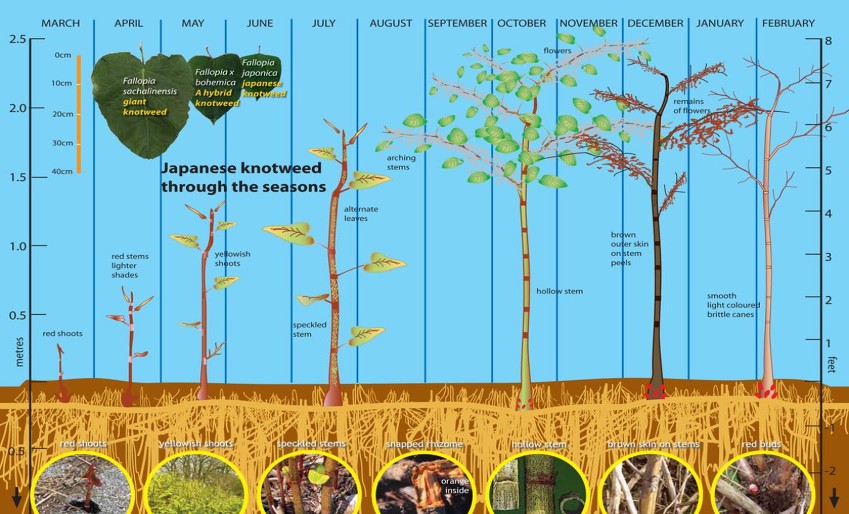
- Clumps of bamboo-like stems. Japanese knotweed often grows in large clumps of bamboo-like stems. The stems can grow up to 3 meters tall and 10 centimeters thick.
- Clusters of white flowers. Japanese knotweed flowers in the summer, producing clusters of small, white flowers. The flowers are not very showy, but they can be a helpful identification feature.

- Rhizomes. Japanese knotweed has a deep, extensive rhizome system. The rhizomes are underground stems that can grow up to 30 meters long and 6 centimeters thick. They are a major source of the plant's invasive potential.

- Purple sap. When Japanese knotweed is cut or damaged, it releases a purple sap. This sap is a characteristic feature of the plant that can help you to identify it.
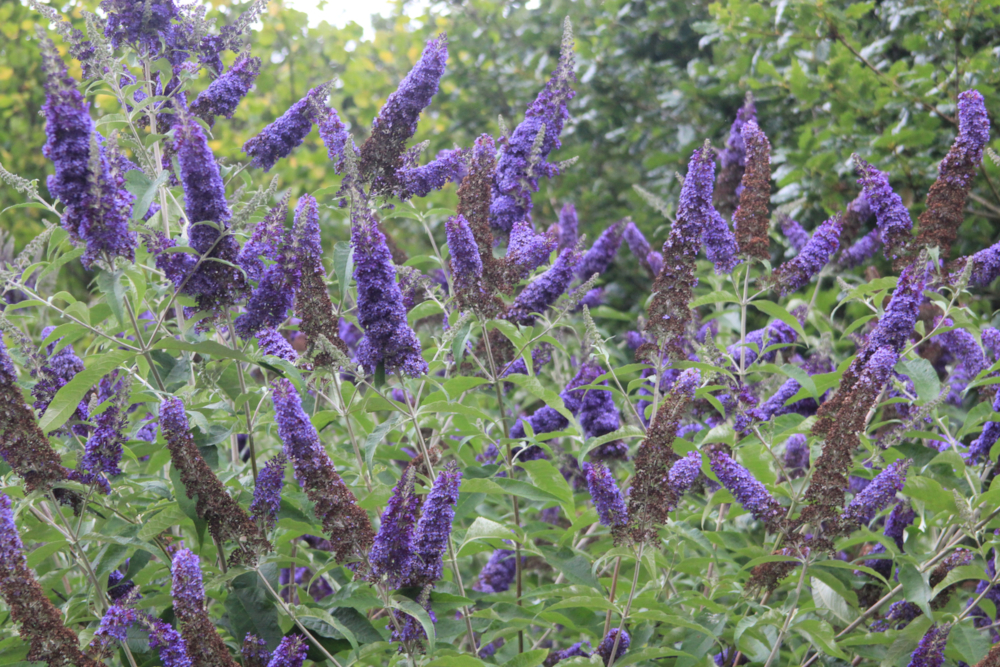
- Grows in moist areas. Japanese knotweed prefers to grow in moist areas, such as along riverbanks, streams, and ditches. It can also be found in disturbed areas, such as construction sites and abandoned lots.
- Difficult to control. Japanese knotweed is a very difficult plant to control. It can resprout from even the smallest pieces of rhizome, making it very difficult to eradicate.
- Invasive species. Japanese knotweed is an invasive species in many parts of the world. It can displace native plants and damage infrastructure.
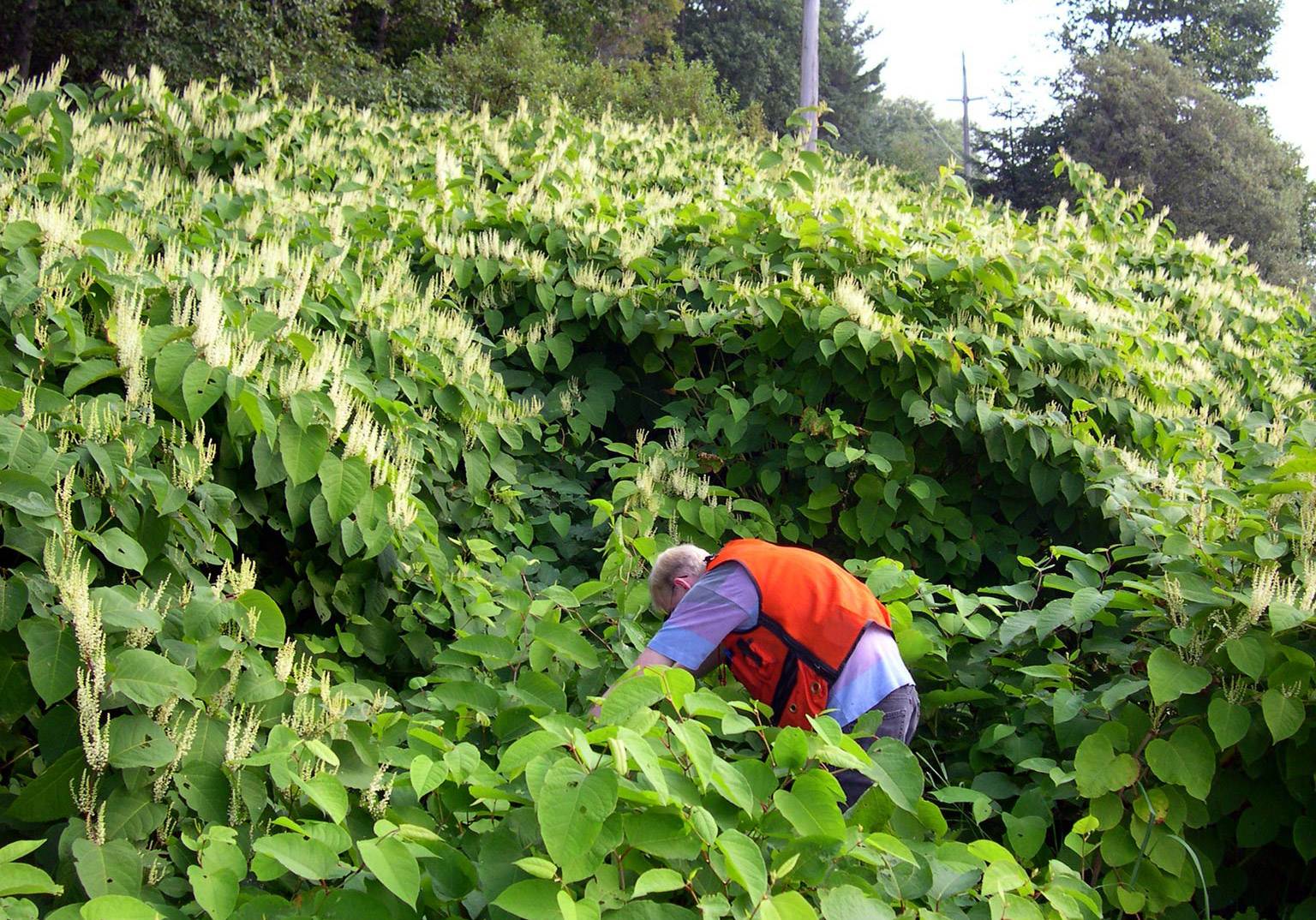
- Declared noxious weed in many countries. Japanese knotweed has been declared a noxious weed in many countries, including the United States, Canada, and the United Kingdom. This means that it is illegal to plant, sell, or transport the plant without a permit.
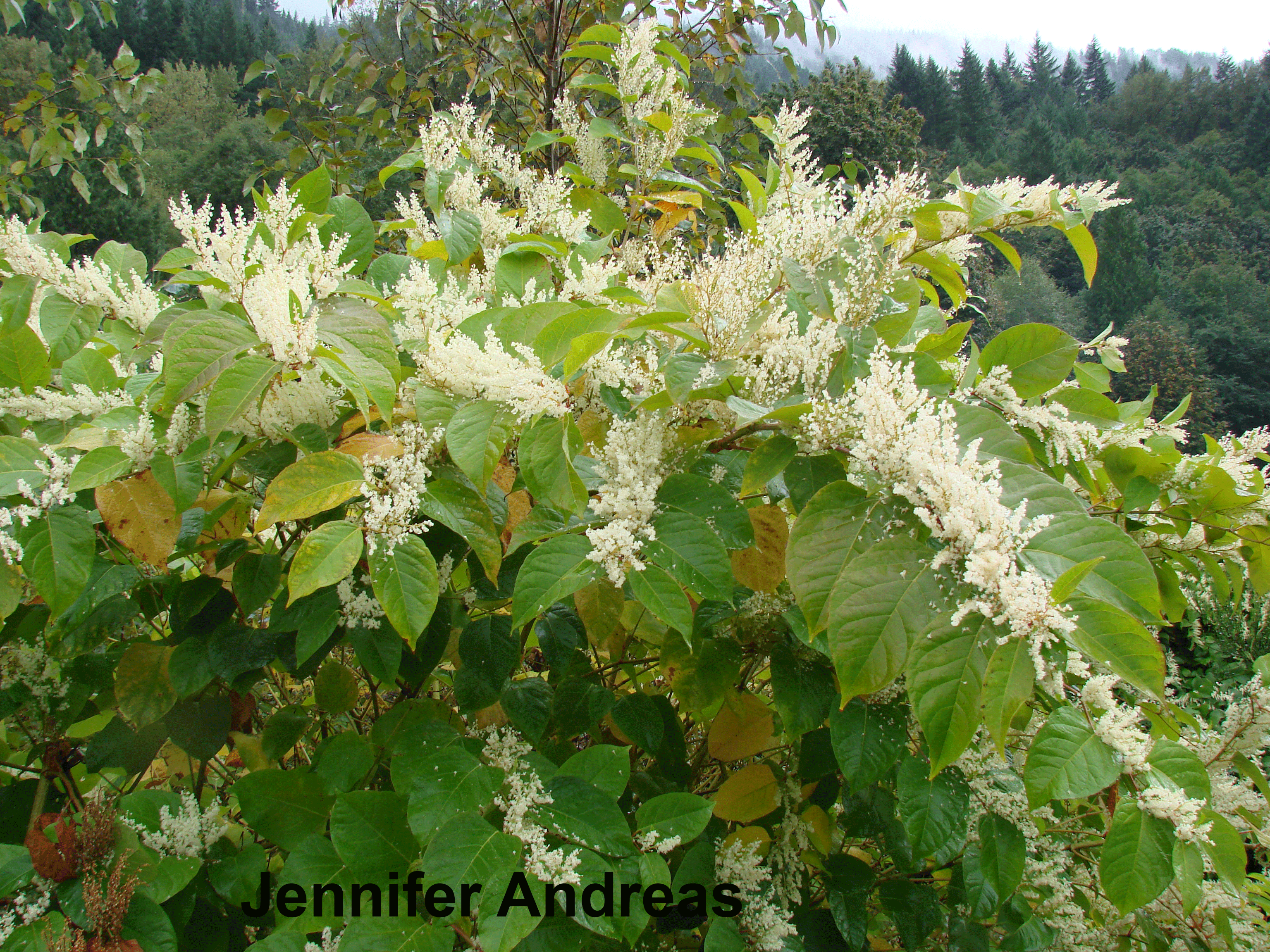
Post a Comment for "How To Identify Japanese Knotweed In Seconds"